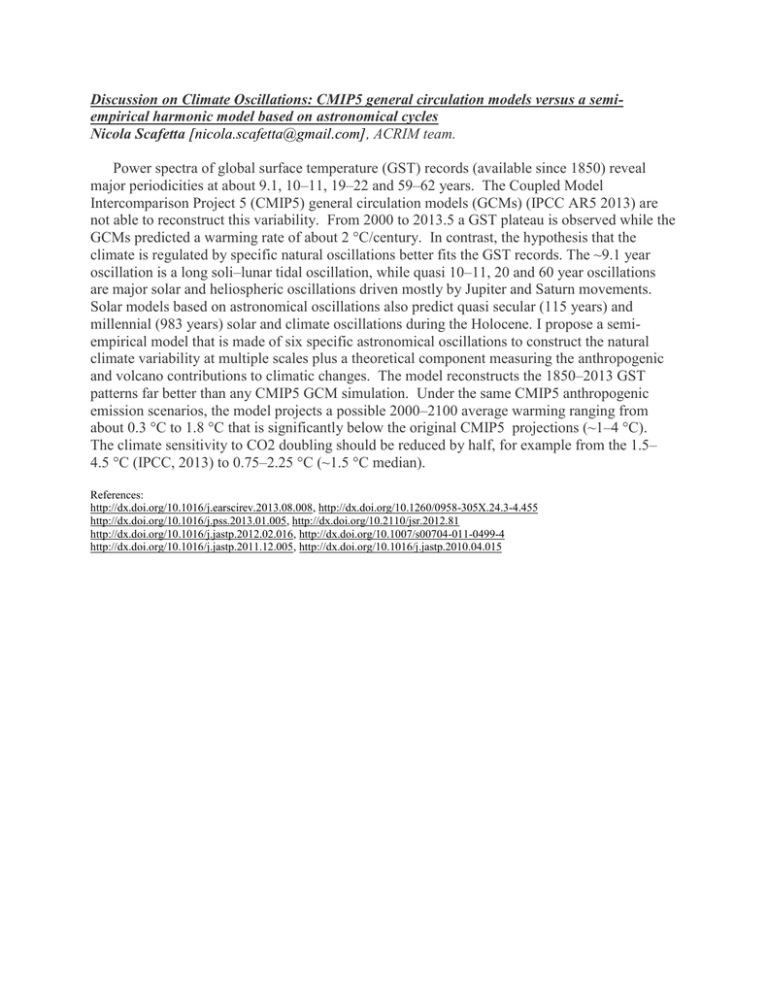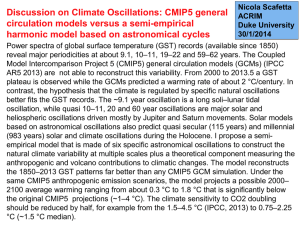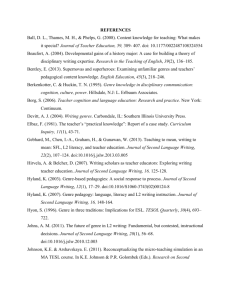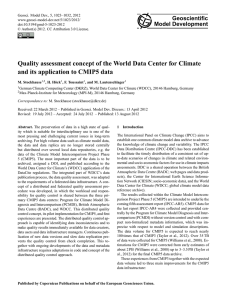Discussion on Climate Oscillations: CMIP5 general circulation models versus a... empirical harmonic model based on astronomical cycles
advertisement

Discussion on Climate Oscillations: CMIP5 general circulation models versus a semiempirical harmonic model based on astronomical cycles Nicola Scafetta [nicola.scafetta@gmail.com], ACRIM team. Power spectra of global surface temperature (GST) records (available since 1850) reveal major periodicities at about 9.1, 10–11, 19–22 and 59–62 years. The Coupled Model Intercomparison Project 5 (CMIP5) general circulation models (GCMs) (IPCC AR5 2013) are not able to reconstruct this variability. From 2000 to 2013.5 a GST plateau is observed while the GCMs predicted a warming rate of about 2 °C/century. In contrast, the hypothesis that the climate is regulated by specific natural oscillations better fits the GST records. The ~9.1 year oscillation is a long soli–lunar tidal oscillation, while quasi 10–11, 20 and 60 year oscillations are major solar and heliospheric oscillations driven mostly by Jupiter and Saturn movements. Solar models based on astronomical oscillations also predict quasi secular (115 years) and millennial (983 years) solar and climate oscillations during the Holocene. I propose a semiempirical model that is made of six specific astronomical oscillations to construct the natural climate variability at multiple scales plus a theoretical component measuring the anthropogenic and volcano contributions to climatic changes. The model reconstructs the 1850–2013 GST patterns far better than any CMIP5 GCM simulation. Under the same CMIP5 anthropogenic emission scenarios, the model projects a possible 2000–2100 average warming ranging from about 0.3 °C to 1.8 °C that is significantly below the original CMIP5 projections (~1–4 °C). The climate sensitivity to CO2 doubling should be reduced by half, for example from the 1.5– 4.5 °C (IPCC, 2013) to 0.75–2.25 °C (~1.5 °C median). References: http://dx.doi.org/10.1016/j.earscirev.2013.08.008, http://dx.doi.org/10.1260/0958-305X.24.3-4.455 http://dx.doi.org/10.1016/j.pss.2013.01.005, http://dx.doi.org/10.2110/jsr.2012.81 http://dx.doi.org/10.1016/j.jastp.2012.02.016, http://dx.doi.org/10.1007/s00704-011-0499-4 http://dx.doi.org/10.1016/j.jastp.2011.12.005, http://dx.doi.org/10.1016/j.jastp.2010.04.015




